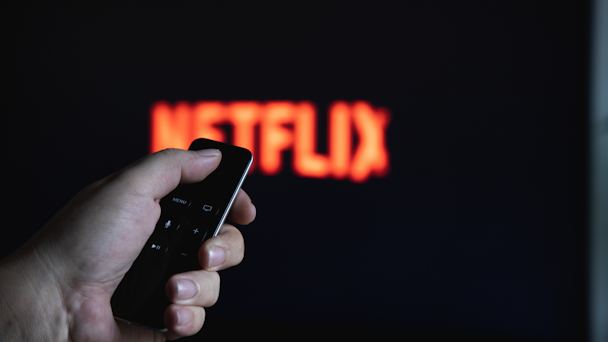Product placement 2.0 is one solution to Netflix’s problem
More brands in films? It’s coming, writes 20Nine founder Greg Ricciardi.

Product placement can’t be skipped and generates revenue for both parties, argues Ricciardi / Credit: Adobe Stock
If Netflix and other streaming services wish to scale without compromising their unique business models, they should learn to embrace the age-old marketing strategy of product placement.
We all are aware that James Bond drives an Aston Martin. But do we know what the British automaker spends for that awareness? How about Smirnoff, the vodka that gets “shaken, not stirred” in 007’s martinis? If reports after the success of last year’s No Time to Die are any indication, brands spend well into eight figures to be included within the narrative of these films.
Advertisement
Heineken elbowed its way into the Daniel Craig sophistication with a $45m film insertion that included placement of its familiar green bottles in multiple scenes, along with other creative units that ran in theaters and elsewhere. Not just your usual commercials, these 60-second units used compelling creative that looks and feels like the Bond films, and a two-minute-long version aired during the 2020 Super Bowl to wide acclaim.
And that’s the point. Obviously, that media was not part of the film’s input/output – but seamlessly inserting a brand into a narrative requires ancillary buys to augment and amplify the point. The brand has to rise to the narrative, not just be present in it. Heineken won with Bond and assuredly enjoyed compelling profits for its spend, while the film’s producers recouped a significant portion of their production budget with one insertion.
Advertisement
So, what does this have to do with Netflix?
While the Bond insertion makes sense for Heineken, not all brands align so seamlessly, let alone so favorably, with characters in narrative films. The massive investment in No Time to Die followed Heineken spending $36m to appear in 2012’s Skyfall. Smart marketers don’t generally increase a budget by 25% unless they can point to compelling ROI. Clearly, it isn’t guessing about its effectiveness – it knows these insertions work. When a big-budget movie can recoup 30-50% of its production budget back from a few product insertions, what can a vertically-integrated connected TV (CTV) content producer like Netflix do?
Netflix reportedly delivered $27m to Coca-Cola for product placements in its Stranger Things serial, though we don’t know what Netflix charged for that exposure. Other reports suggest that Netflix is asking for CPMS (costs per mile) upwards of $65 for old-style ads. What sort of premium will they charge for virtual product placements in Netflix serials or feature films? And what will consumers think? Furthermore, with so many ads already bombarding consumers, how can Netflix build this out without making it look like linear TV?
Suggested newsletters for you
How product placement can scale
Obviously, a lot of alchemy is required whenever a producer aligns a character with a brand. This isn’t merely a linear celebrity endorsement along the lines of Jennifer Aniston with Vitamin Water. Any product placements – be they virtual product placements or actual ones – must make sense within a film’s narrative, and brands must accept that characters convey certain values that may or may not align with their own.
Netflix made a savvy choice with Microsoft as its partner, creating an arms race among all those who would enter and add value from the open web, versus the walled garden approach that would have ensued had it chosen Google. The same programmatic technology that streamlines buying at scale while addressing consumers via their profiles or relevance via content is already providing a lot of this scale more seamlessly – and consumers are noticing, in a good way. Amazon has rolled out multiple efforts at virtual product placement in Amazon Prime Video streams, but the largest company delivering virtual product placement advertising programmatically, Mirriad, already serves over 82m impressions per month on CTV platforms.
Mirriad recently completed a study with Kantar that suggests consumers not only favor this kind of virtual product placement advertising over ads that interrupt or overlay, they favor the products in them. Just under 80% of consumers in the Kantar study reported ‘liking’ the in-content advertising format, preferring it seven times more than legacy units. Broadcasting and cable reported that the audience for in-content advertising was much higher (22-49%) than that for commercial breaks. That drives higher retention, which obviously drives better results – according to the Kantar study.
Netflix just hired two of the smartest sellers on the planet to run its nascent monetization effort. Jeremi Gorman and Peter Naylor departed Snap for Netflix just days before Snap laid off 20% of its workers. As they build out their team and devise a strategy to generate more revenue without losing subscribers, bank on an investment in scaling virtual product placement. It doesn’t require interrupting what consumers are watching, it can’t be skipped, it generates tons of revenue and it works for marketers.
Greg Ricciardi is founder and chief executive at 20Nine.

